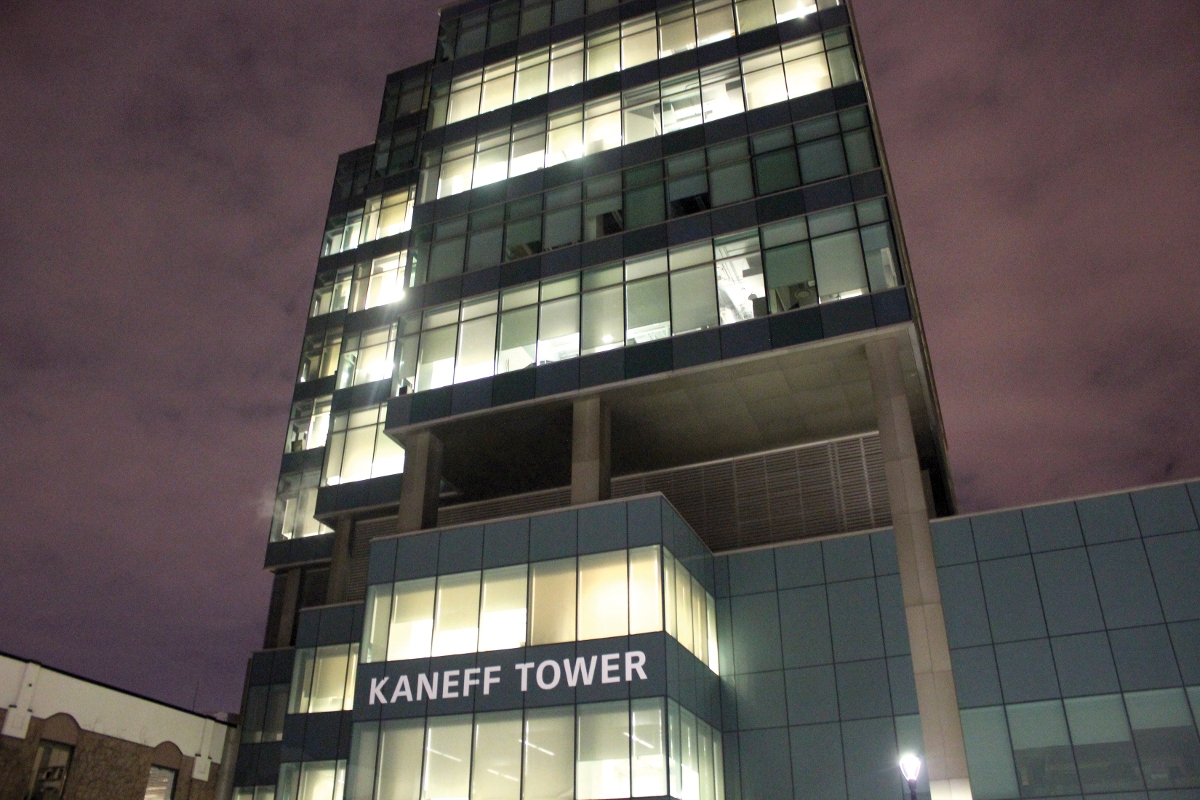Dennis Bayazitov | Assistant News Editor
Featured image: The governors evaluated progress, objectives, and challenges at the February 27 meeting. | Basma Elbahnasawy
On February 27, York hosted a Board of Governors meeting to discuss external and internal context considerations, implement integrated resource plans, and review their Shared Accountability & Resource Planning (SHARP) program.
The external context portion focused on matters of York’s new funding model, fixed enrolment corridor, strategic mandate agreement (SMA2) priorities and Metrics, the upcoming provincial election, implementing a French university, and emerging campus issues.
Internal context revolved primarily around advancing the 2015-2020 University Action Plan, which involved specifying a clear vision, formulating a new leadership term, and implementing integrated resource planning.
Their vision was defined as working towards four guiding pillars: access, connectedness, excellence, and impact.
Leadership was broken down into prioritizing new research, New Decanal Guidelines, and Leadership Development.
To successfully evolve and integrate research planning, the Board will take a direction towards leveraging external opportunities.
For integrating research planning for accessing and outreach to new students from recruitment to graduation, York discussed its Indigenous Strategic Framework. Leveraging technology would be integrated, in the forms of York’s YUStart and Wayfinding programs.
The Board recognized York’s commitment to its vision by debriefing the success of their Dreamers project. The pilot project provided 10 undocumented students living in Canada an opportunity to post-secondary education, in cooperation with the FJC Refugee Centre. It contributed $235,685 over a two-year span to integrate precarious immigration status. With successful completion of the requisite bridging course, students became eligible for admission to York.
Excellence goals were set as continuing to refine Faculty Program Quality Plans underway, the academic innovation fund and forum of ideas, supporting increased activity with the experiential education hub, and developing the New Strategic Research Plan. Its deadline is March. York submitted its Diversity, Equity and Inclusion Action Plan in December, and submitted the Canada Research Chairs its new nominations from May to November 2018.
Another landmark was the approval of the design and budget for the roughly-$253 million construction of the new Markham Campus, which set the design development phase into progress. Construction is expected to start by the end of this year.
Research Income for the 2016 to 2017 academic year, which will be reported publicly in the fall this year, was $96 million—the first time York saw a budget surpass $80 million.
The Canada First Research Excellence Fund for the Vision: Science to Applications program, which started in January 1, 2017, completed its first full year.
Innovation York activities broke participation records, including the launch of the IgniteUP mentorship program to support startups; AccelerateUP completed its third cycle competing for Aird and Berlis’ Start Up Source Award. There were more than 2,086 participants in the LaunchYU entrepreneurship events from May to November 2017—100 more than in all of the 2016 to 2017 academic year.
Until the next meeting, the Board prioritized continuing to further an implement for the Institutional Integrated Resource Plan, a focus on completing capital projects, including plans for the new School of Continuing Studies; working to advance the Markham Centre Campus, continuing to amplify the Spanish Resource Centre at Glendon; completing the plan for the Internationalization strategy, strengthening collateral governance, and completing labour negotiations.
Challenges for this term included: securing funding for bilingual institutions and collaborating with Glendon as a French university; securing capital needs and deferred maintenance, but predominantly around labour relations.
Challenges in negotiating with the Canadian Union of Public Employees local 3903 included issues of transit/fare integration and changing political context.
The governors look forward to align enrolment, complement, and budget plans with new SMA2 parameters, including implementing a new enrolment corridor, as well as a new funding formula with a differentiation bucket. Another focus includes revampening the SHARP budget model, introduced in the 2017 to 2018 academic year; establishing a Governance Committee and introducing consultation process, which is to be released in March. SHARP2 is currently in development.
The full-time faculty (FTF) complement plan is in progress to increase FTF over the next five years. Sixty-one per cent of all courses were reported to be taught by FTF.


